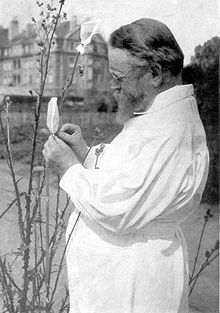Uniparental inheritance
Like all other genetic concepts, the discovery of uniparental inheritance stems from the days of an Augustinian priest known as Gregor Johann Mendel.
The soon-to-be "father of modern genetics" spent his days conducting hybridization experiments on pea plants(Pisum sativum) in his monastery's garden.
Although his work was published, it lay dormant until it was rediscovered in 1900 by Hugo de Vries and Carl Correns but it was not until 1909 that non-mendelian inheritance was even suggested.
Carl Erich Correns and Erwin Baur, in separately conducted researches on Pelargonium and Mirabilis plants, observed a green-white variation (later found as the result of mutations in the chloroplast genome) that did not follow the Mendelian laws of inheritance.
Nearly twenty years later, non-mendelian inheritance of a mitochondrial mutation was also observed and, in the sixties, it was proven that chloroplasts and mitochondria have their own DNA and that they are capable translation, transcription, and replication independent of the nucleus.
It was eventually shown that the primary defect in the poky mutants is a deletion in the mitochondrial DNA sequence encoding the small ribosomal RNA subunit.
